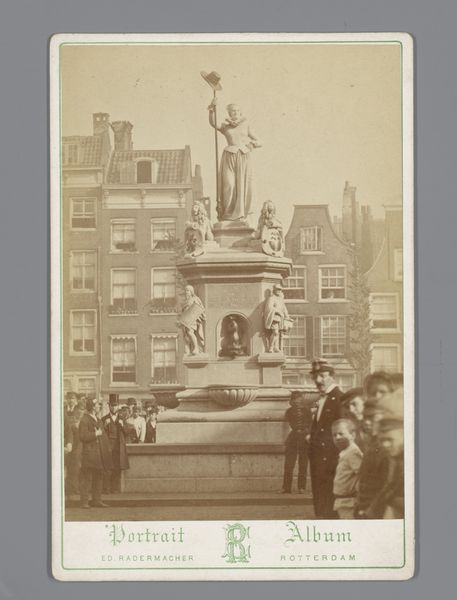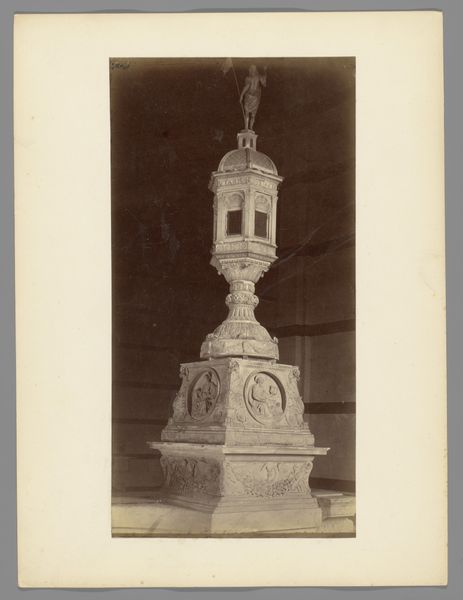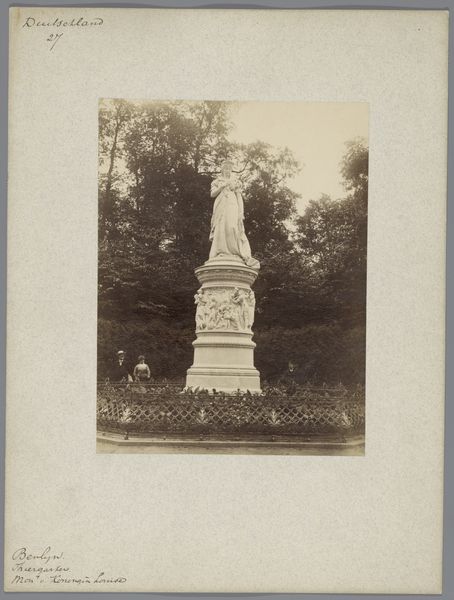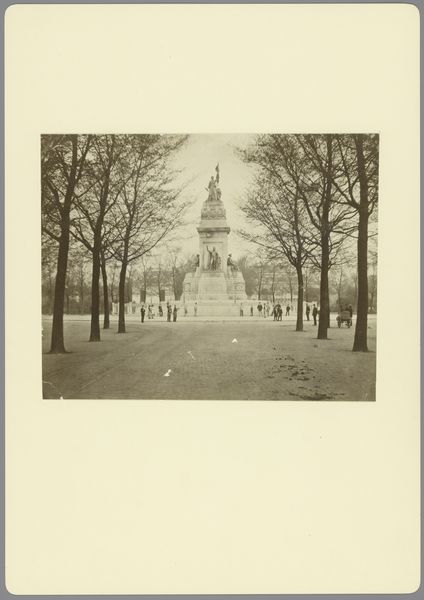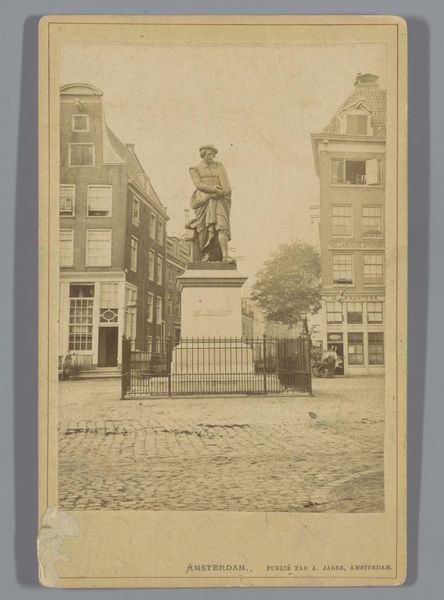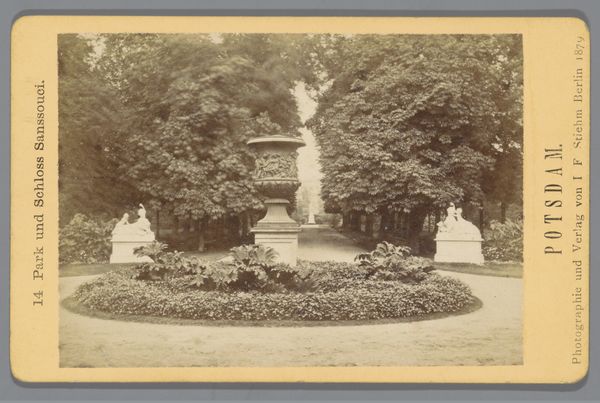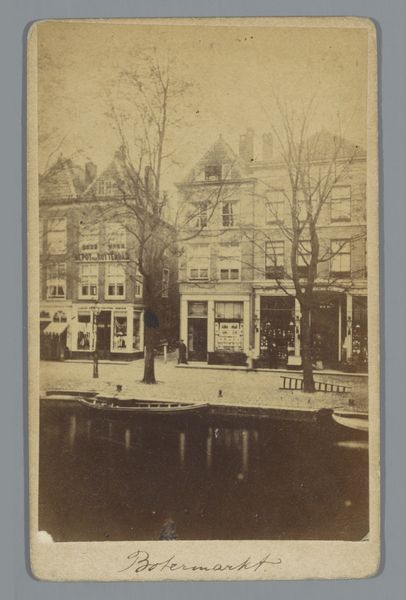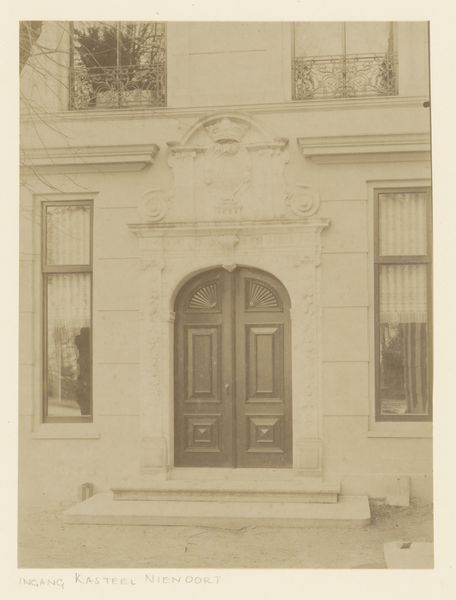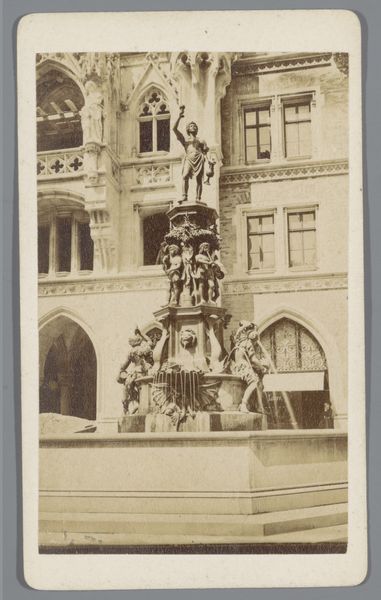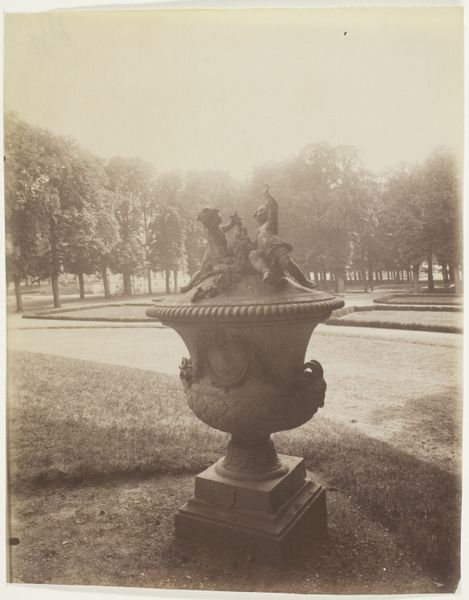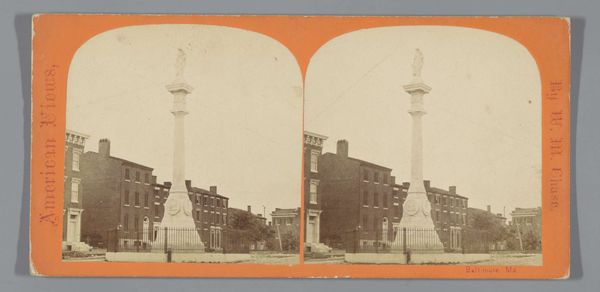
photography, gelatin-silver-print, albumen-print
#
landscape
#
photography
#
gelatin-silver-print
#
cityscape
#
albumen-print
#
realism
Dimensions: height 168 mm, width 108 mm
Copyright: Rijks Museum: Open Domain
Curator: The photograph before us, entitled "Gezicht op de Visfontein te Leiden," or "View of the Fish Fountain in Leiden," dates from somewhere between 1879 and 1900, and it’s attributed to Jan Goedeljee. It presents the titular fountain as seen within the urban landscape. Editor: It has this sepia tint, almost like looking at a memory, but the crisp detail in the ironwork around the fountain and the architecture makes it feel immediate. There's a lovely contrast there, like witnessing the past made present. Curator: This sense of immediacy likely stems from the photographic process itself, an albumen or gelatin-silver print – both of which offered increasingly finer resolution. What also captures my interest is Goedeljee's framing. Look at the relationship between the fountain, this ornate declaration, and the very straightforward buildings in the background. Editor: That tension is fascinating, isn't it? The backdrop highlights how embedded the fountain is in the day-to-day fabric of the city. Consider the politics inherent in commissioning such elaborate pieces of public art; this fountain undoubtedly catered to particular socioeconomic groups while subtly reinforcing specific ideas about beauty, class, and community standing. Curator: I agree. And one could dig even further to consider what materials were used to create the fountain, where they came from, and how this affected both global trade and local labour within the Netherlands. Think of the labour processes of mining, transporting, and the eventual assembly by masons in situ. These would all be important considerations for Goedeljee himself during the commission of this gelatin print, including all the materials and chemicals required. Editor: Absolutely. And beyond these formal considerations, I find myself wondering: what kinds of conversations did this space invite? Did the fountain's aesthetic exclude marginalized members of the population in subtle yet definite ways? Its visual appeal would not have been democratically received, for sure. Curator: That’s a vital point, and perhaps not something Goedeljee was directly thinking about, but that the photograph documents nonetheless. Its value lies not just in its realistic representation, but the dialogue it creates about production, society, and class. Editor: I concur entirely; understanding art involves unearthing these complex threads. Curator: Precisely; it reminds us that these artifacts were fabricated to provoke debate. Editor: Indeed, leaving me pondering our own involvement with spaces in public art to this day.
Comments
No comments
Be the first to comment and join the conversation on the ultimate creative platform.
